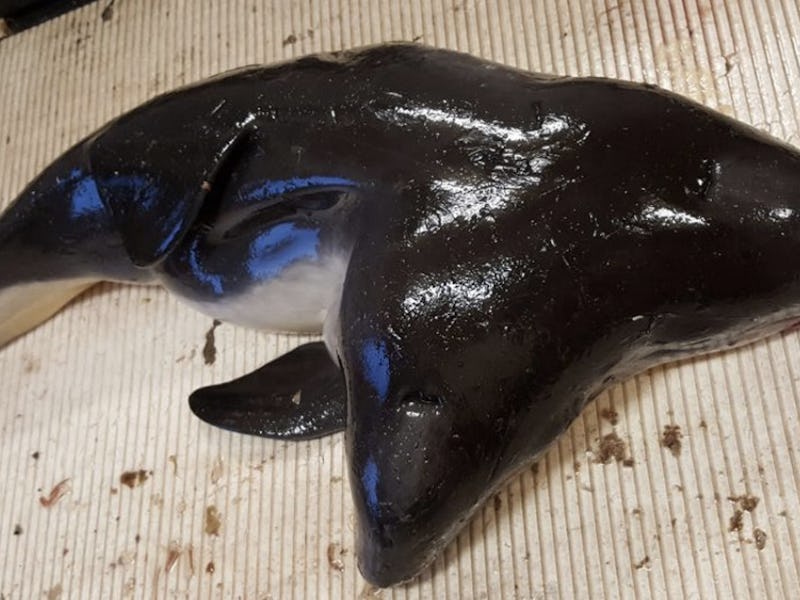The Sad Tale of the World's First Two-Headed Baby Porpoise
When the fishermen found him, it was already too late.

In Amsterdam last month, fishermen pulled up something surprising: a newborn porpoise with two heads — or rather, two newborn porpoises, with the same body.
This is the first documented case of conjoined twins in porpoises, and only the 10th in the cetacean family, which includes whales and dolphins. The discovery was documented by Erwin Kompanje of the Natural History Museum Rotterdam and coauthors in the online journal DEINSEA last week.
Conjoined twins in any species occur in one of two ways. Either two separate embryos fuse and begin to develop as one, or a single embryo begins to split into two but fails to complete the division. Twins can be joined at various places in the body and share many or few body parts. The specific case where there are two heads joined to a single body is known as bicephaly — literally meaning two heads.
Conjoined twins are rarely seen in wild mammal populations, probably because they rarely survive long after birth.
Bicephaly has been previously documented in humans, cats, cattle, pigs, goats, sheep, snakes, turtles, and crocodiles. Abby and Brittany Hensel, bicephalic human twins born in 1990, shared a moment of fame in the reality TV spotlight as they went about their mostly normal teenage lives, going to high school, talking about boys, and taking driving exams.
Our porpoise friends weren’t so lucky. They were either stillborn or would have died shortly after birth, according to the scientists’ assessment. Its dorsal fin had not erected, which it would have soon after birth if the animals had survived.
The fishermen took photos of the porpoises and then returned them to the sea, believing that it would be illegal to bring the animal to shore. The specimen was a little over two feet long and weighed about 10 pounds.
Twins in cetaceans are extremely rare, as their just isn’t enough room for the female’s body to house two pups. Only one case of twin porpoises has been previously documented. Likely, though, this happens a lot more than we are aware of. The twins birthed in nature hopefully go on to lead normal, porpoiseful lives. Those that don’t survive, like these little critters, are probably scooped up fairly quickly as fish food before a fishing trawler happens by.